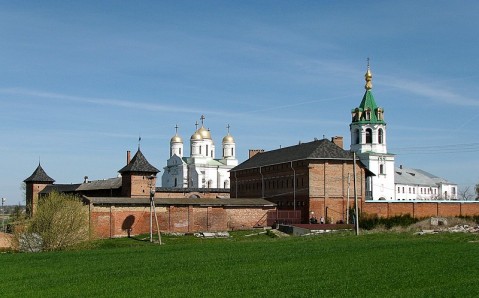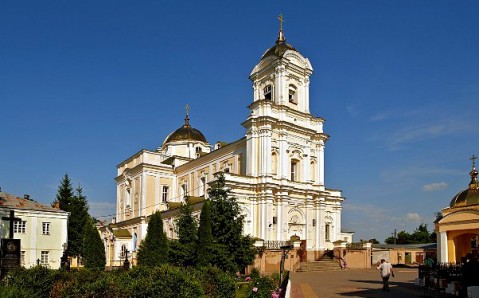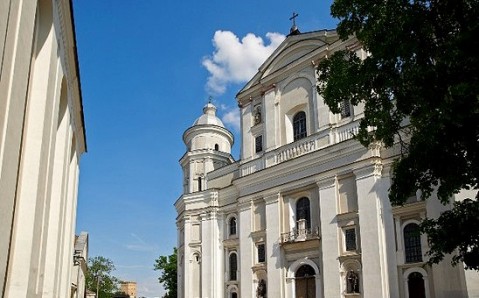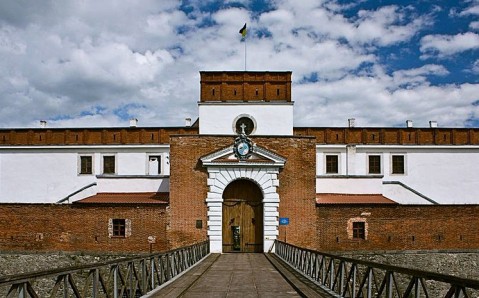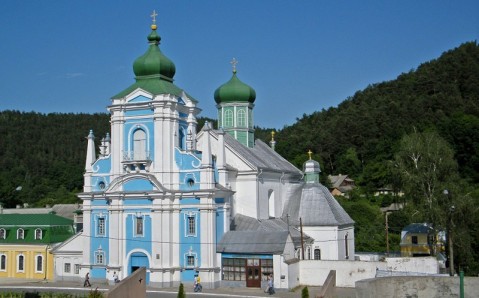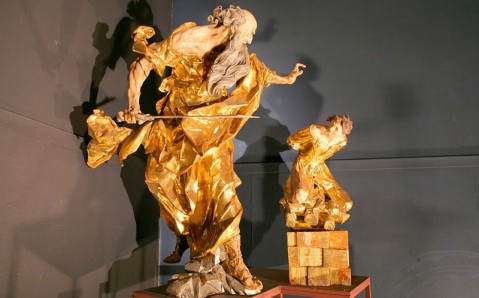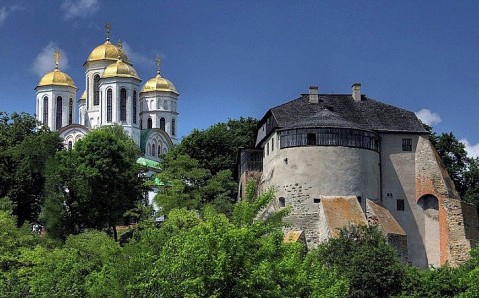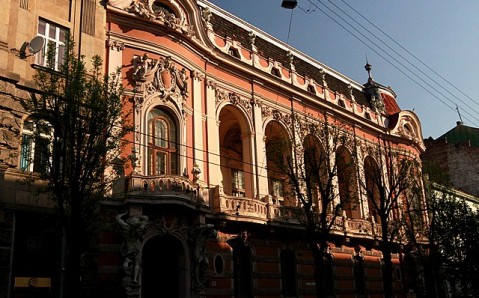Zymne Monastery
•
Lutsk
Zymne Monastery
•
Lutsk
Standing on a small mountain in Zymne village, not far from Lutsk, the Zymne Svyatogorsk Monastery is one of the Ukraine’s oldest monasteries. According to legend, it was founded by the Prince Vladimir the Great, under whose reign the Rus was baptized. It was on the Svyata Hora (Holly Mountain) that he founded his winter residence, in 1001. He ordered to build two wooden churches and a tower palac
Saint Trinity Cathedral
•
Lutsk
Saint Trinity Cathedral
•
Lutsk
Gorgeously standing in town's administrative center, the Saint Trinity Cathedral is the true sacral architecture's masterpiece and Lutsk's main Orthodox shrine. Its light monumental building is one of the most beautiful in town and can be seen virtually from any point of Lutsk, and its bell chime can be heard even in the town's most remote corners.
In ancient times, the wooden Church of the Holy C
St. Peter and Paul Cathedral
•
Lutsk
St. Peter and Paul Cathedral
•
Lutsk
The splendid St. Peter and Paul Cathedral's monumental and at the same time elegant building adorns the Old Town and is rightly considered one of the most beautiful and valuable architectural monuments in Lutsk. Being surrounded with halo of mystery and keeping century-old secretes, it is the most attractive sight in town that must be visited by everyone without fail.
The St. Peter and Paul Cathed
Dubno Castle
•
Rivne (47 km.)
Dubno Castle
•
Rivne (47 km.)
The Dubno Caste stands on the steep cape near the Ikva River, in the city very center. It is one of the Ukraine’s oldest fortification complexes. Impressing with its majestic beauty and huge historical value, it is a part of the Dubno historical and cultural reserve and is recognized as a true gem of Ukraine’s castle architecture.
The Prince Konstantin of Ostroh built the castle on the place of th
St. Nicholas Cathedral
•
Kremenets (78 km.)
St. Nicholas Cathedral
•
Kremenets (78 km.)
The light and elegant baroque building of the St. Nicholas Cathedral is one of the Kremenets’s architectural trademarks. This amazing temple attracts not only with its charming forms, but also with its tough history. It started in the middle of the 16th century. The Polish King Sigismund I Bon’s wife, who owned Kremenets castle, ordered to erect a wooden parish church, which then became the first
Johann Georg Pinsel Museum of Sculpture
•
Lviv (136 km.)
Johann Georg Pinsel Museum of Sculpture
•
Lviv (136 km.)
The museum of sacral baroque sculpture is reckoned among the Lviv’s most interesting and impressive museums. It keeps the unique heritage of Johann Georg Pinsel – one of the most talented and mysterious sculptors of the 18th century. He is nicknamed Ukrainian Michelangelo for extraordinary mastery.
The museum is situated in the building of the age-old Catholic church, which formerly belonged to t
Jesuit Monastery and Collegium
•
Kremenets (78 km.)
Jesuit Monastery and Collegium
•
Kremenets (78 km.)
Consisting of a two-tower Catholic church and adjoined study buildings in the late baroque style, the ensemble of the Jesuit Monastery and Collegium strikes with its beauty and grandeur. Situated in Kremenets’s very center, it is city’s main architectural symbol and one of its most attractive sights.
Being famous for their educational activity, the Jesuit monks were invited to Kremenets by the Lit
Ostroh Castle
•
Rivne (96 km.)
Ostroh Castle
•
Rivne (96 km.)
Menacingly towering over the twenty-meter-high hill in the age-old town of Ostroh not far from Rivne, the Ostroh Castle is seen as a token sample of the Ukrainian fortification architecture and is recognized as one of the Volyn’s most interesting historical and architectural monuments. In the 14th century, the castle complex was raised on the place of the Old Russian town, which was destroyed by M
House of Scientists
•
Lviv (137 km.)
House of Scientists
•
Lviv (137 km.)
The building of the former noble casino and now the House of Scientists is one of the Lviv most amazing and perfect architectural structures and is recognized as a valuable neo-baroque monument. The construction was ordered by the studs’ owners club and was carried out by the famous Austrian company Fellner and Helmer, in 1898. They are known for designing such famous buildings like Vienna Observa

 Western
Western
